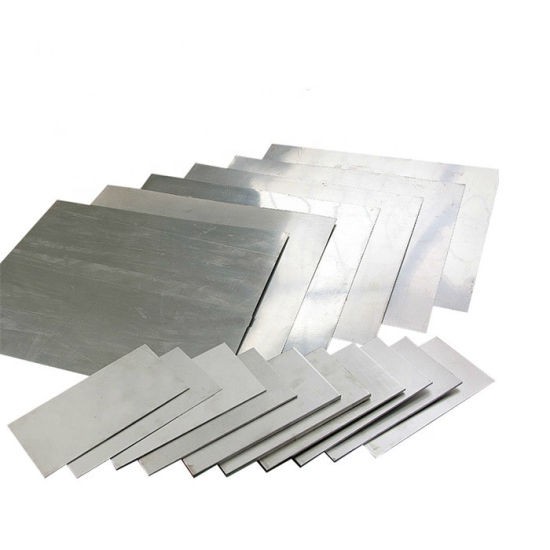Baoji Hong Ya Da Nonferrous Metal Materials Co.,Ltd.
Add: No.85,Baotai Road,High-tech Development Zone,Baoji City,Shaanxi,China.721013
Contact:Ms.carrolyn
Mob/We chat/ Whats app: +86-15191772362
Tel:0086-917-3854158
Email:carrolyn@hydtitanium.com
Skype:carrolyn851
QQ:379855550
Characteristics of titanium
High strength: 1.3 times of aluminum alloy, 1.6 times of magnesium alloy, 3.5 times of stainless steel, champion among metal materials.
High thermal strength: The use temperature is several hundred degrees higher than that of aluminum alloy, and it can work for a long time at a temperature of 450-500℃.
Good corrosion resistance: acid resistance, alkali resistance, atmospheric corrosion resistance, particularly strong resistance to pitting and stress corrosion.
Good low temperature performance: Titanium alloy TA7 with extremely low interstitial elements can maintain a certain degree of plasticity at -253℃
High chemical activity: The chemical activity is high at high temperature, and it easily reacts with gas impurities such as hydrogen and oxygen in the air to form a hardened layer.
The thermal conductivity is small and the modulus of elasticity is small: the thermal conductivity is about 1/4 of nickel, 1/5 of iron, and 1/14 of aluminum. The thermal conductivity of various titanium alloys is about 50% lower than that of titanium. The modulus of elasticity of titanium alloy is about 1/2 of that of steel.
Aerospace applications of titanium alloys
Titanium alloys are mainly used in aircraft and engine manufacturing materials, such as forged titanium fans, compressor disks and blades, engine hoods, exhaust devices and other parts, as well as structural frame parts such as aircraft girder frames. The spacecraft mainly uses the high specific strength, corrosion resistance and low temperature resistance of titanium alloys to manufacture various pressure vessels, fuel tanks, fasteners, instrument straps, frames and rocket shells. Artificial earth satellites, lunar modules, manned spacecraft and space shuttles also use titanium alloy sheet welding.
In 1950, the United States used it for the first time on F-84 fighter-bombers as non-load-bearing components such as rear fuselage heat shields, wind deflectors, and tail covers. Since the 1960s, the use of titanium alloy has moved from the rear fuselage to the middle fuselage, partially replacing structural steel to make important load-bearing components such as bulkheads, beams, and flap slides. Since the 1970s, civilian aircraft began to use titanium alloys in large quantities. For example, the Boeing 747 passenger aircraft uses more than 3,640 kilograms of titanium, which accounts for 28% of its weight. With the development of processing technology, a large amount of titanium alloy is also used in rockets, artificial satellites and spacecraft.
The more advanced the aircraft, the more titanium is used. The titanium alloy used by the American F-14A fighter jets accounts for about 25% of the aircraft weight; the F-15A fighter jets account for 25.8%; the fourth-generation American fighter jets use 41% titanium, and the F119 engine uses 39% titanium. The aircraft with the highest amount of titanium.

Reasons why titanium alloys are widely used in aviation
The top speed of modern aircraft has reached more than 2.7 times the speed of sound. Such fast supersonic flight will cause the aircraft to rub against the air and generate a lot of heat. When the flight speed reaches 2.2 times the speed of sound, the aluminum alloy can't stand it. High temperature resistant titanium alloy must be used. When the thrust-to-weight ratio of the aeroengine increases from 4-6 to 8-10, and the compressor outlet temperature increases from 200-300℃ to 500-600℃, the original low-pressure compressor discs and blades made of aluminum must be replaced. Titanium alloy. In recent years, scientists have continuously made new progress in the research on the properties of titanium alloys. The original titanium alloy composed of titanium, aluminum and vanadium has a maximum operating temperature of 550°C to 600°C, while the newly developed titanium aluminum (TiAl) alloy has a maximum operating temperature of 1040°C. Using titanium alloy instead of stainless steel to manufacture high-pressure compressor disks and blades can reduce structural weight. Every 10% weight reduction of the aircraft can save 4% of fuel. For the rocket, every 1kg of weight reduction can increase the range of 15km.

Baoji Hong Ya Da Nonferrous Metal Materials Co.,Ltd.
Add: No.85,Baotai Road,High-tech Development Zone,Baoji City,Shaanxi,China.721013
Contact: Ms.carrolyn
Mob/We chat/ Whats app: +86-15191772362
Tel:0086-917-3854158
Email:carrolyn@hydtitanium.com
Skype:carrolyn851
QQ:379855550
We sincerely welcome friends from all over the world to cooperate with us on the basis of long-term mutual benefits. We are looking forward to receiving your enquiries soon.
QR Code
